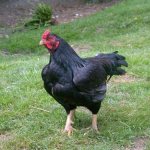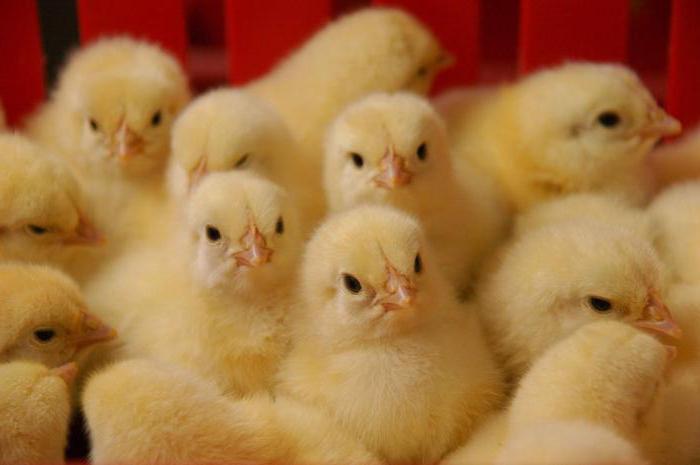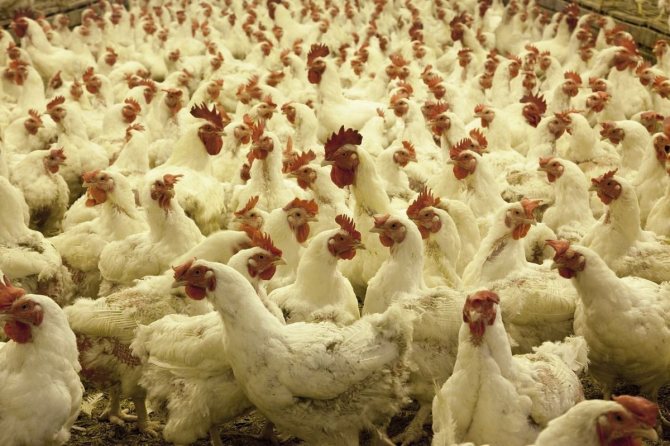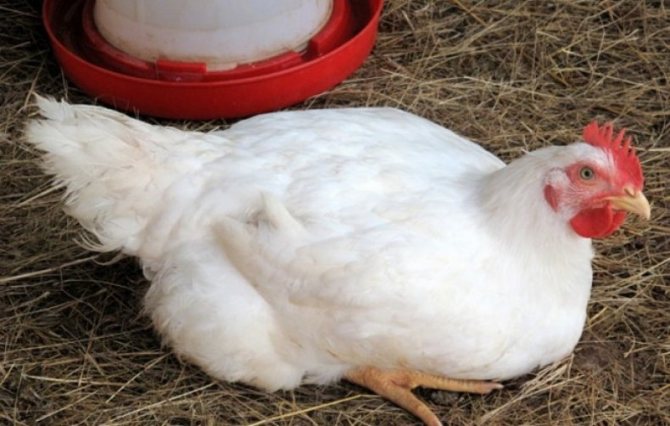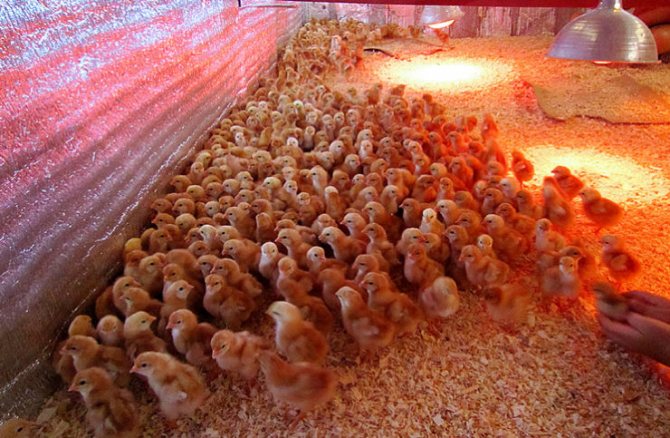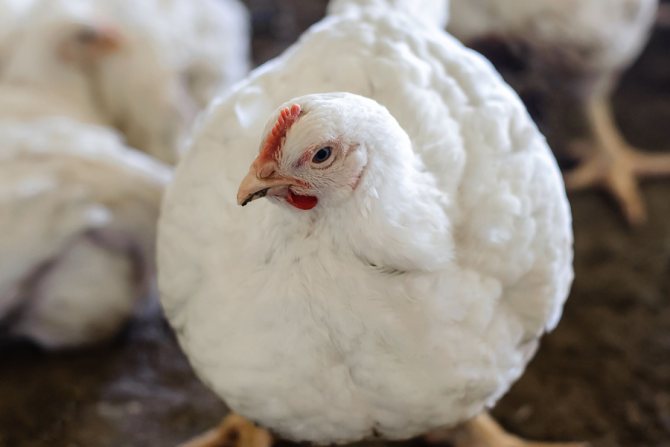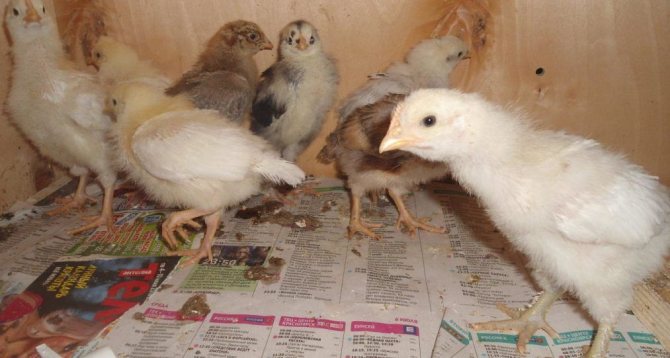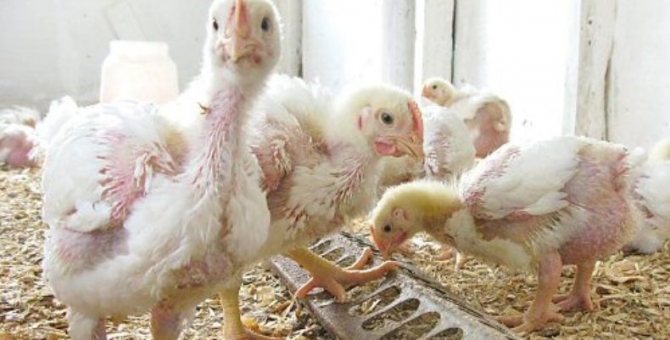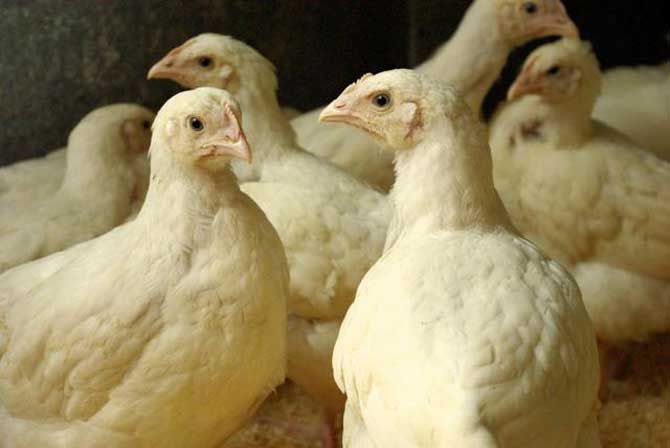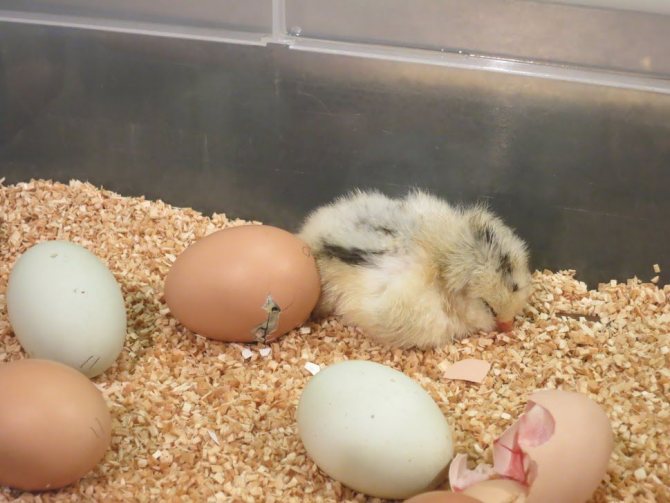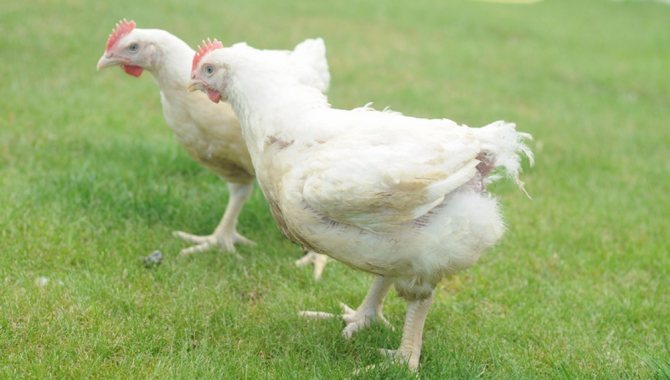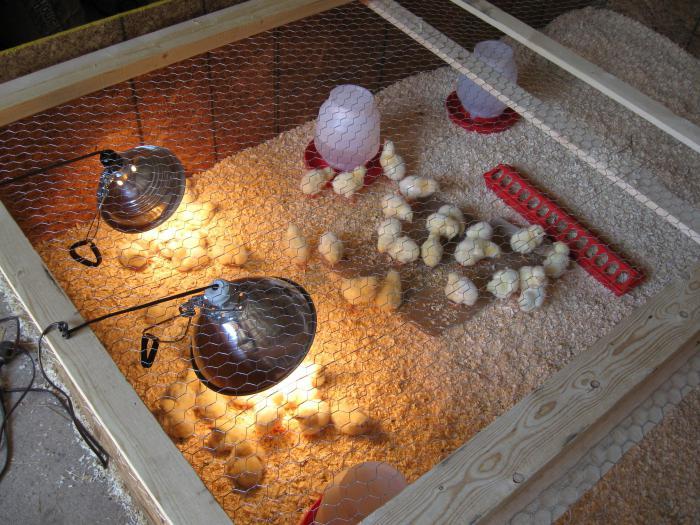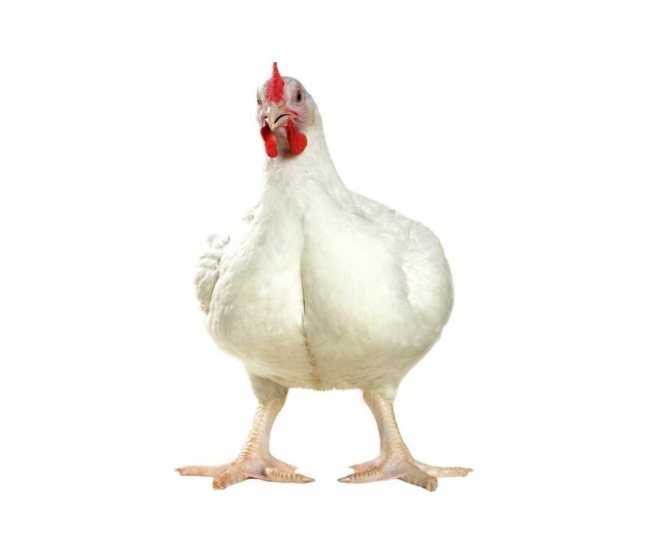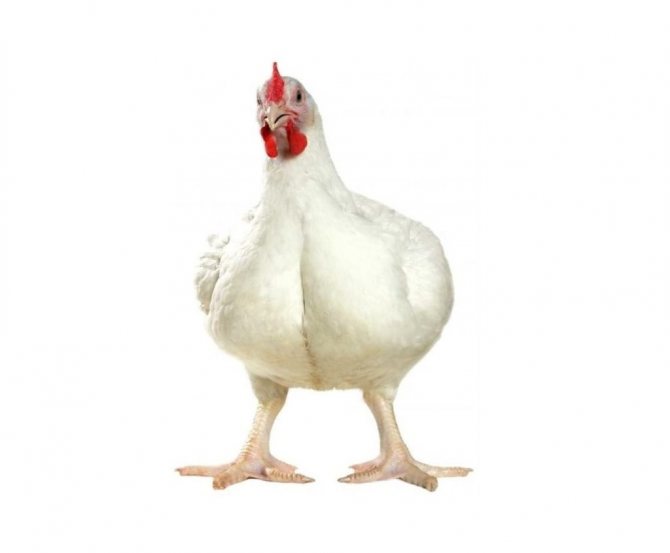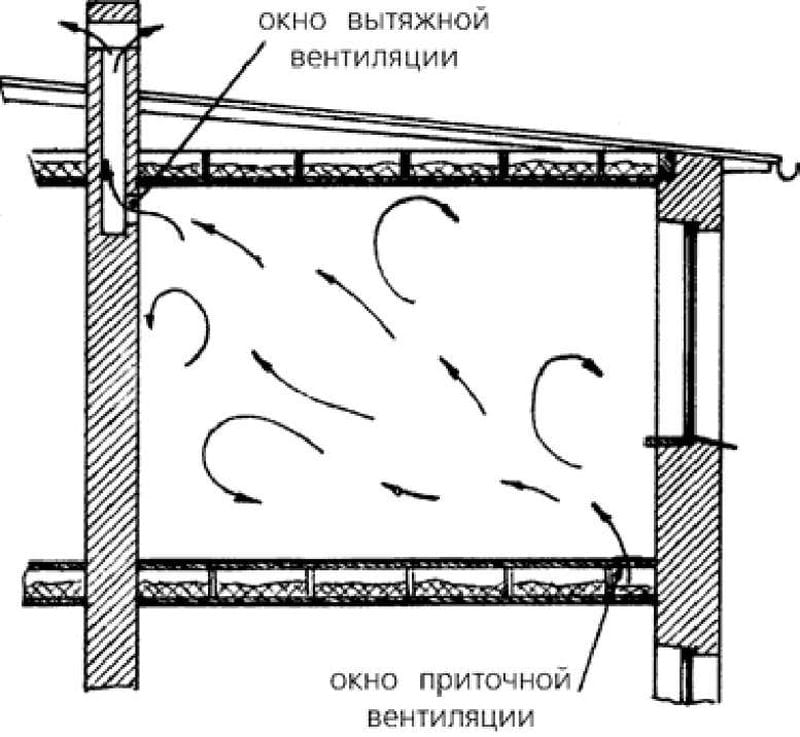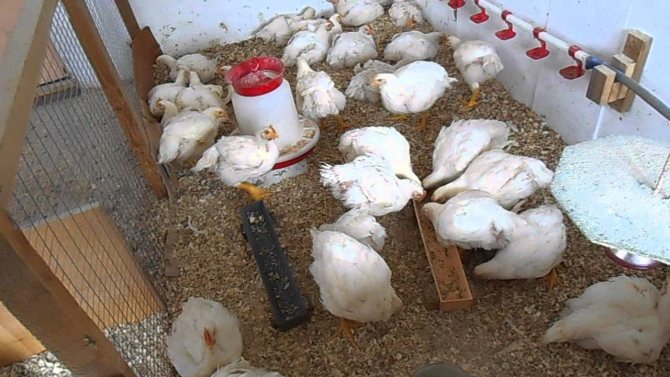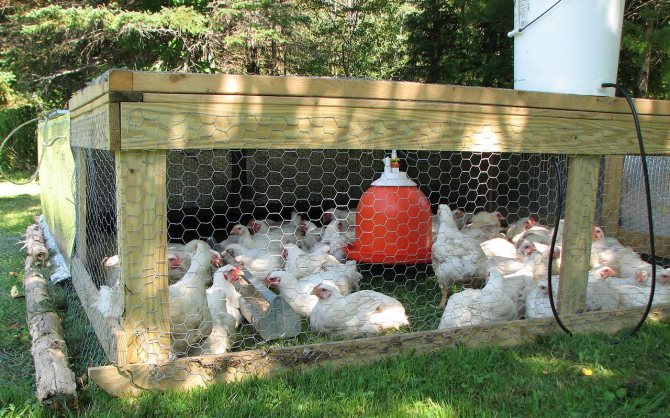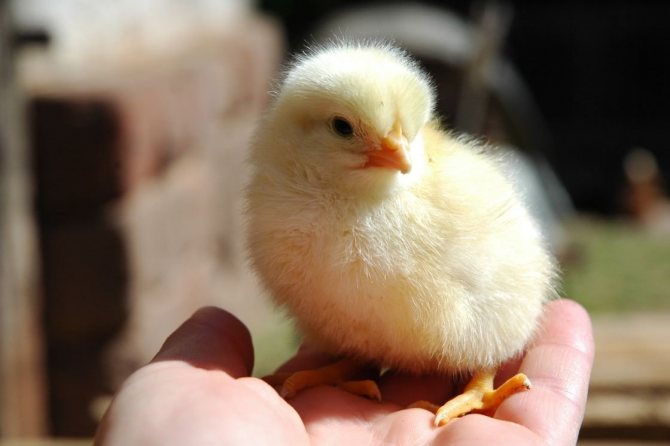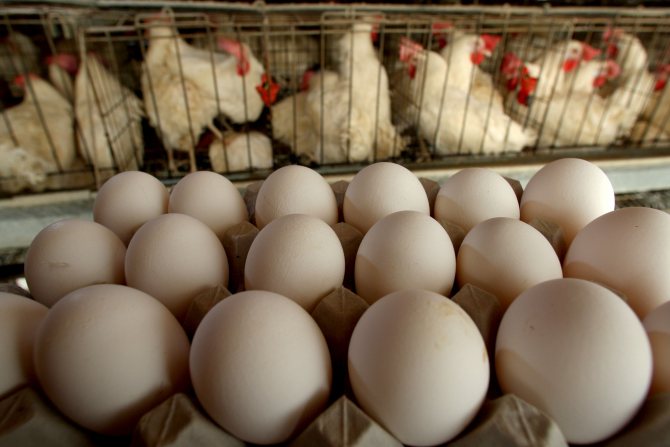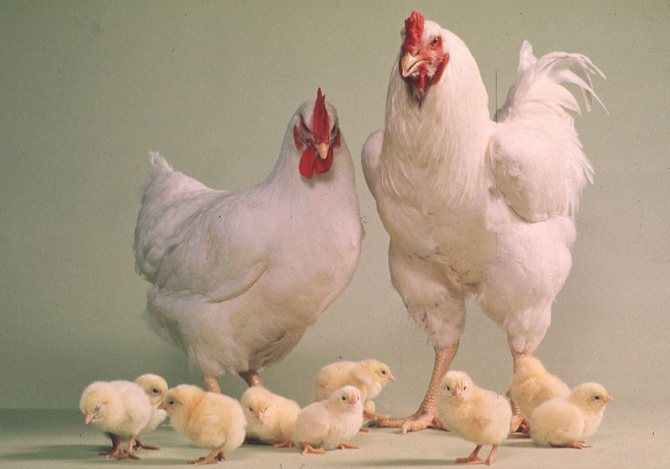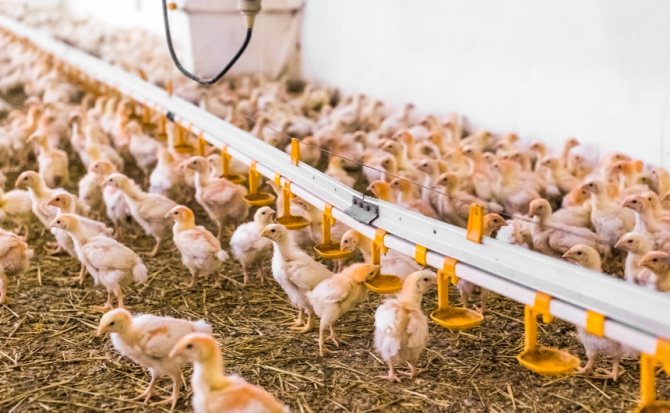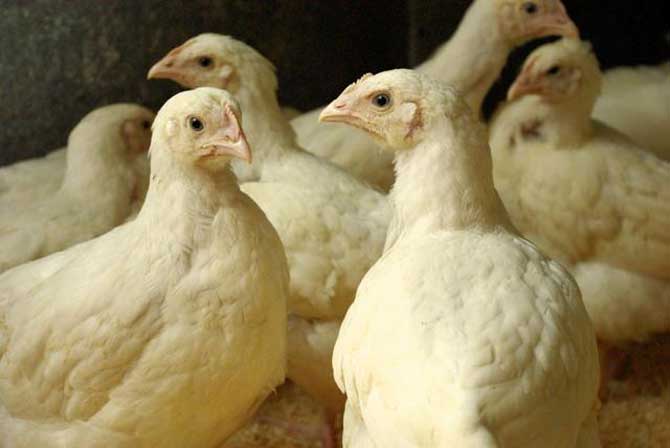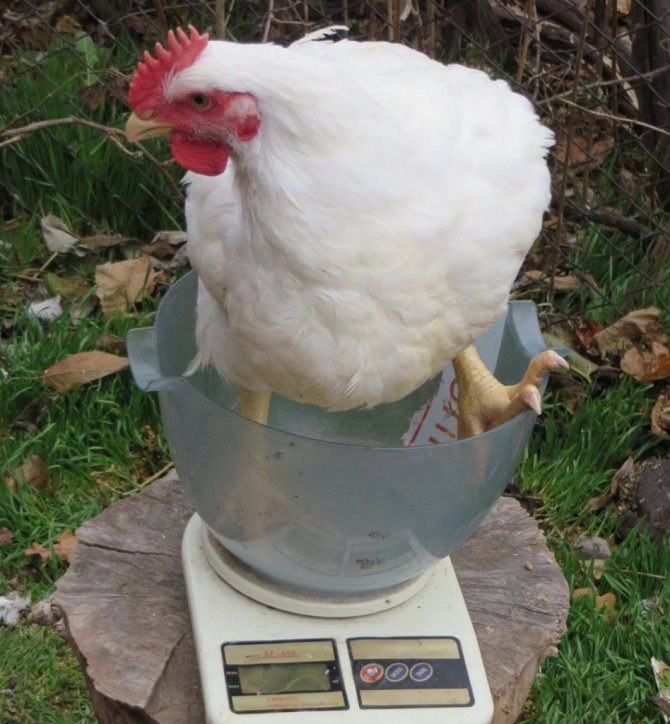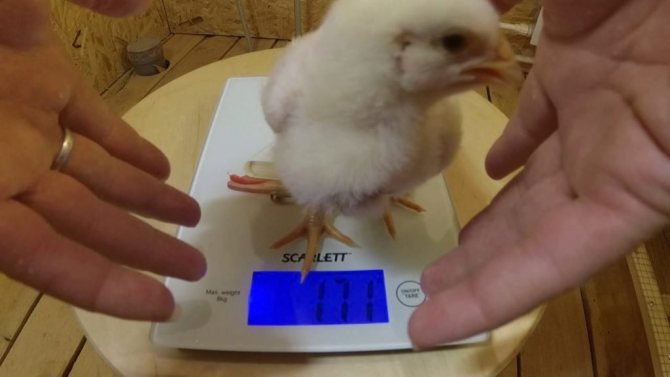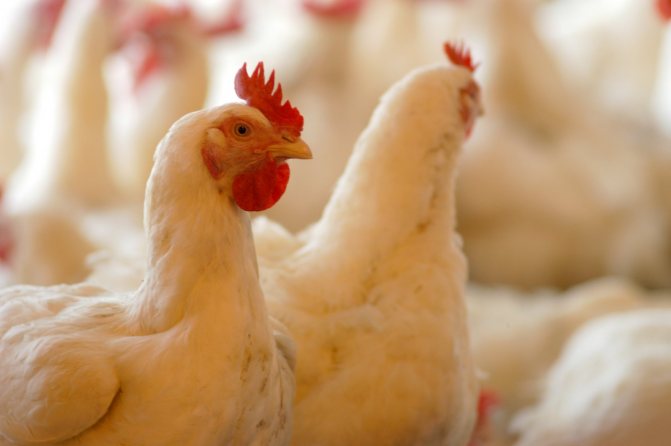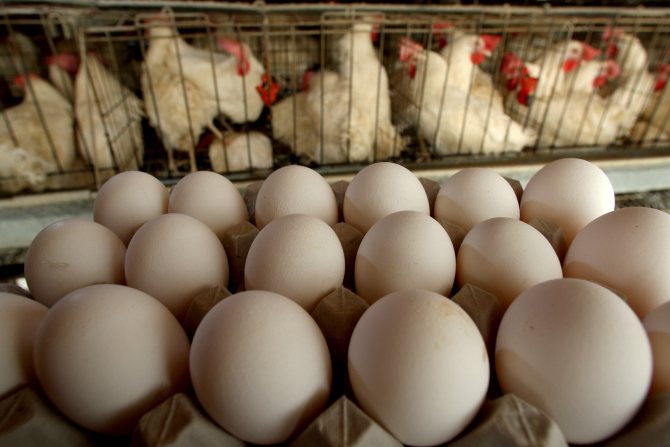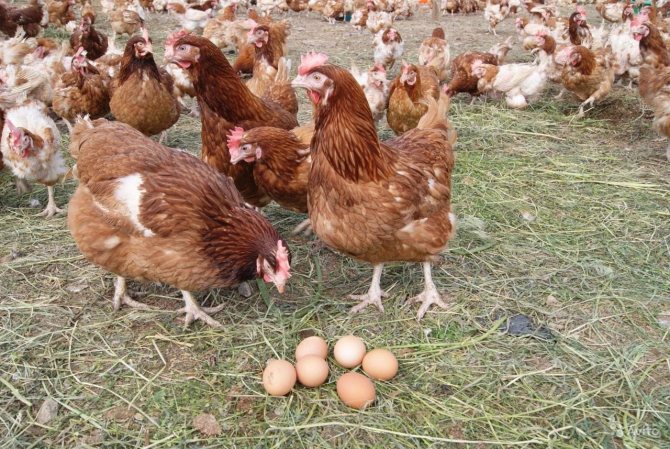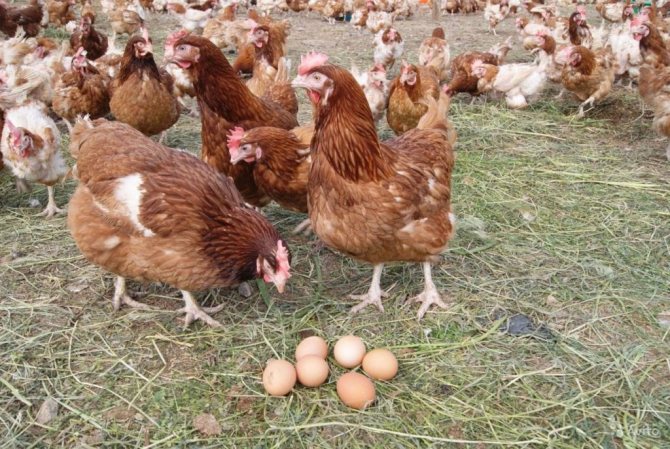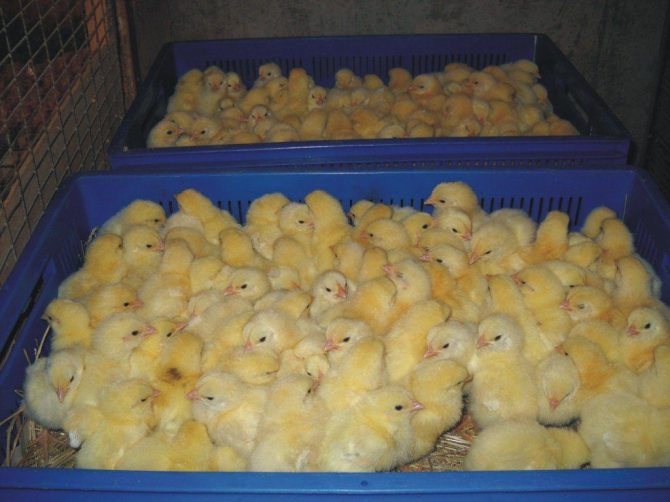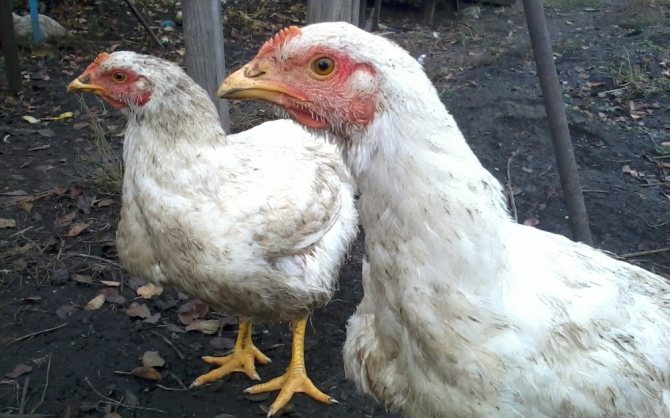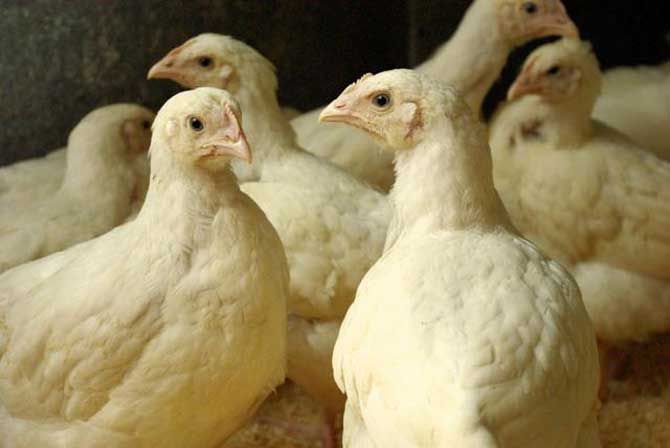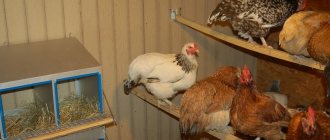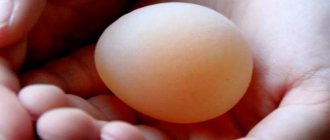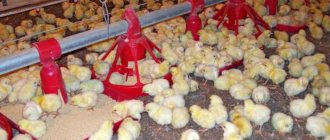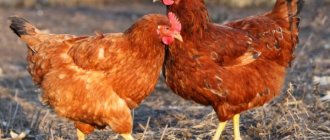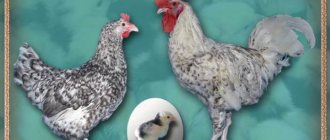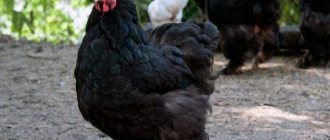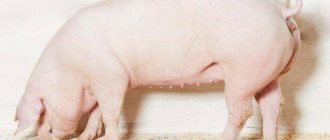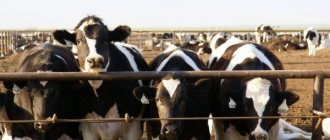Since the Paleolithic era, humanity has been worried about two main thoughts, one of which is: "who can be eaten." With the development of science and understanding of the process of heterosis, it became possible to obtain very large animals with rapid weight gain. Broiler chickens are the pioneers in accelerating animal protein production.
Broiler is not just chicken. This is an animal capable of gaining weight very quickly. The meat of a young animal is softer, tastier and more convenient for frying. From English to broil - "fry" and comes the name of all broiler crosses.
Today, not only broiler chickens have been bred, but also rabbits, bulls, ducks, guinea fowls, geese. All broiler crosses are characterized by the ability to quickly gain weight.
A practical source of quality meat
In everyday life, broilers are called poultry (less often rabbits), which is raised only to obtain meat carcasses. However, experts make a strict distinction: there is a breed of meat direction, and there are meat crosses, and the term "broiler" refers specifically to crosses. As a result of a carefully calculated interbreeding, the purpose of which is to obtain early maturing and rapidly gaining offspring, broiler chickens are. Growing for meat is the only purpose of their creation. Chickens of meat crosses already at the age of two months give a marketable carcass weighing about one and a half kilograms.
Of course, meat breeds can also be raised for meat, they also gain weight well, feed well, but under equal conditions of feeding and keeping, they show more modest results.
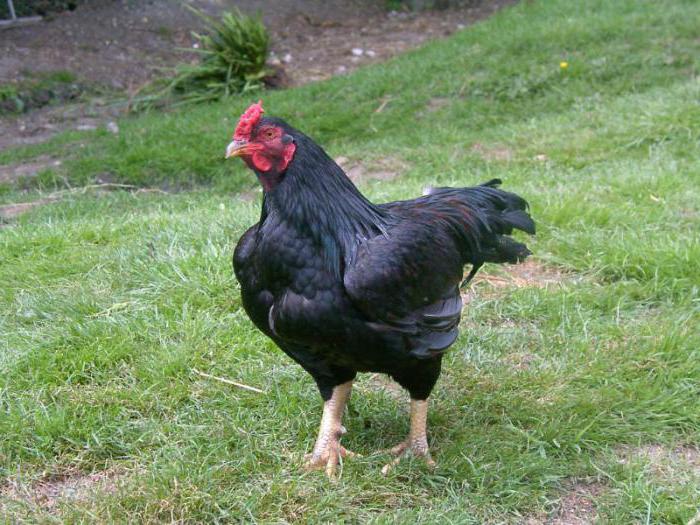
When do broiler chickens start laying?
The age at which the hens begin to lay is influenced by breed characteristics. Usually broiler chickens lay eggs from 6-7 months. As a rule, to obtain egg products, females are left that have not gained the required weight by a certain time.
Important! It makes sense to keep laying broilers until they are two years old, since after maturation, good egg production rates last no longer than 1.5 years. It is impractical to bear the costs of their maintenance any longer.
Broiler chickens in a private subsidiary farm
Contrary to popular misconception, broilers can also be raised on a regular farm. Perhaps, in this case, the weight of the carcass will differ from the factory weight, but when fattening poultry for their own needs, the difference of 100-200 grams is not significant.
Unlike laying hens, broilers do not need perches, so you don't have to think too much about insulated chicken coops, because the lifespan of such a chicken does not exceed 80 days. It is simply unprofitable to feed him longer, because after this age the bird significantly slows down the rate of muscle growth, and feed consumption increases. How are broiler chickens fattened on a private farm? Growing for meat in most cases is made from purchased young stock, and there are reasons for this. Eggs, from which hybrid chickens of meat crosses will later hatch, are practically not found on sale, it is easier to purchase day-old or grown-up chickens.
general characteristics
Thematic and historical information
The name "broiler" is sometimes confused with the concept of "cross".The first word implies a precocious hybrid variety of chickens resulting from the crossing of the best meat and egg-meat species or meat lines. Broilers are also often mistakenly classified as a breed.
Cross, on the other hand, is just an interbreed hybrid, bred for various purposes (obtaining eggs, feathers, meat). On the other hand, there is the term "broiler cross", obtained only for the sake of meat (whereas broilers are simply of meat and meat and egg types). Learn more about this from the article "What are cross-breeds of chickens and how they differ from breeds."
Genetic experiments with domestic chickens began in the first decades of the last century. And already in the fifties, this practice was actively used and developed in the USSR, Europe and the USA.
Received the first broiler chickens from the Cornish and Plymouthrock breeds (white variety). After them, New Hampshire, Jersey, Langshan and other chicken breeds with high productivity began to participate in the experiments.
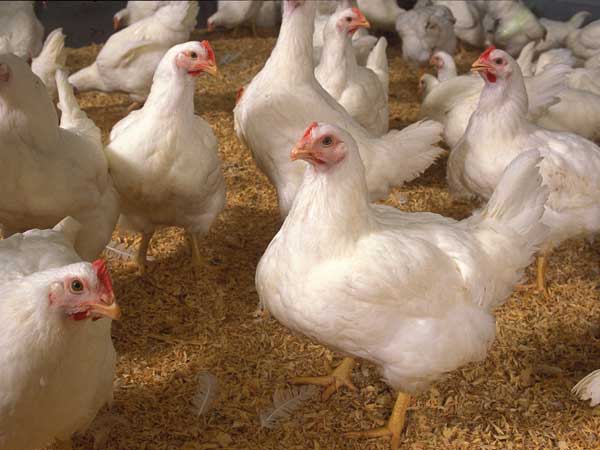

Description
All broilers are characterized by rapid development and growth. They reach a weight of 1.5-2 kilograms within six months after birth. Tender and juicy meat of such individuals is obtained due to early maturity and low feed consumption.
Keeping broiler chickens is a profitable business as the result is achieved very quickly.
All broilers are distinguished by a massive physique and a large back. These are broad-chested and stocky chickens with short legs. Have red lobes and ridges. Most often, their plumage is white.
Birds have a calm nature, they are unpretentious in everyday life. The immunity of broilers is high, so they are comfortable even in an unheated chicken coop.
Pros and cons
Some of the main benefits of broiler varieties include:
- large body weight - up to 4-8 kilos;
- fast growth - broilers are ready for slaughter in the second month;
- phlegmatic and calm character;
- the ability to quickly adapt in adverse conditions.
The lack of most broilers in low egg production. They lay eggs like other poultry. But this amount is not enough to make a stable profit.
The average broiler egg production rate is 100-180 eggs per layer per year. Therefore, for business development on eggs, egg breeds are chosen, for example, foxy chic, maran, araucan, leghorn, dominant. Their performance is from 200 eggs per year.
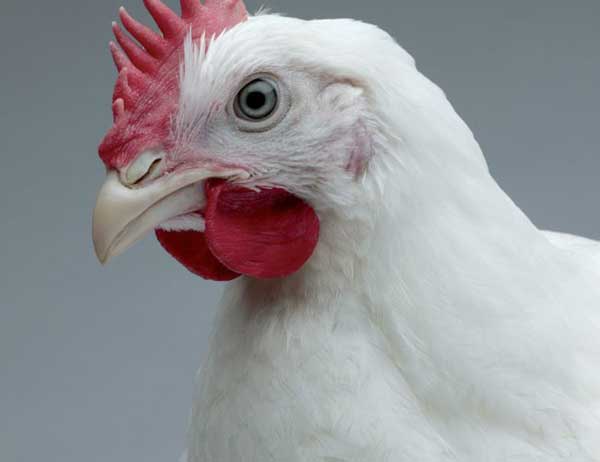

Purchase, placement and fattening of chickens
One of the most pressing questions is where to buy? The default broiler can only be sold on farms that cross breeds to produce meat crosses. However, if we recall that in everyday life broilers are called not only crosses, but also breeds of meat direction, then chickens can be purchased in the breeding farm and even from private enthusiasts engaged in breeding purebred poultry.
Immediately after purchase, chicks are placed in brooders, where it is recommended to set a two-level temperature regime. If the brooder is warmer on one side and cooler on the other, the chicks can move to a more comfortable area. Thus, the owner receives a simple and unambiguous signal to add or decrease heating. This simplest technique allows you to reduce in advance the possibility of mortality of young animals due to overheating or hypothermia.
What should broiler chickens eat from the first days of life? Growing for meat requires close attention to the diet, so the best option would be a specialized pre-start feed from 0 to 7-10 days. On this diet, important functions of the digestive system are laid, the chickens receive a good supply of health. It is important to remember that any, even the thought-out mash itself, hopelessly loses to the pre-start compound feed in the ideal balance of all the substances necessary for the development of the chicken.
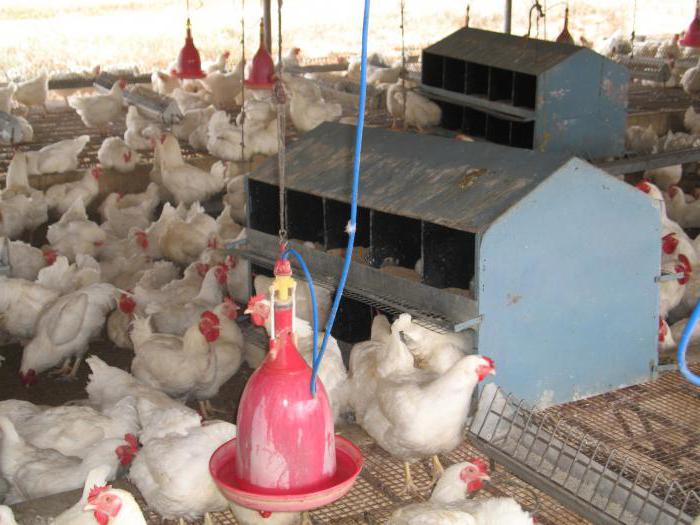

Features of the diet
To grow a meaty and strong herd, you need to adhere to a specific feeding pattern. The optimal feeding scheme is as follows:
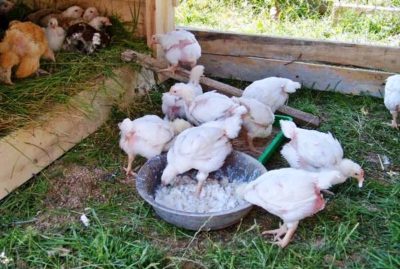

Prestart.- Start.
- Fattening.
- Finish.
It is also very important to maintain the ratio of water to feed. For broiler chickens, it should be 1.7 to 1. Water should be served only clean and fresh, with a temperature of about 18-22 degrees.
When feeding, the structure of the feed plays an important role. In this matter, the age of the birds serves as a guideline. At different stages of growth and development, broiler intestines are capable of digesting certain foods:
- Up to 10 days - sifted cereals (microgranules are acceptable).
- From 11 to 24 days - granulated feed (diameter 2-3.5 mm), coarse milling.
- From day 25 to slaughter - granulated feed (3.5 millimeters), coarse milling.
The fastest possible growth of meat can be achieved when feeding with compound feed.
Table. Average daily gain and feed consumption by age category.
| Prestart | Start | Fattening | Finish | |
| Age in days | 0-5 | 6-18 | 19-37 | 38-42 |
| Gain in grams | 15 | 33 | 54 | 56 |
| Feed rate in grams | 15-21 | 25-89 | 93-128 | 160-169 |
Chick feeding
Feeding should be complete and balanced from the first days of the chick's life. If a kid cannot peck on his own, he should be helped by resorting to a pipette. Feeding scheme:
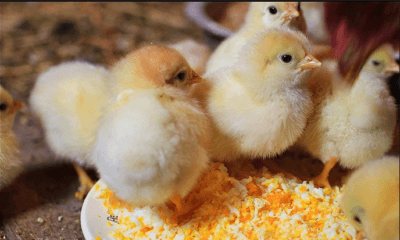

From 1 to 10 days - feed the chickens every 2 hours. The diet includes boiled eggs, milk and cottage cheese. On the fifth day of life, the egg can be mixed with crushed eggshells.- From day 10 cereal crops are introduced. The mixture looks as follows: corn grits - 50%, crushed wheat - 25%, barley flour - 10%, oat flakes - 5%. It is very important to add nettle (10%) to the feed, only it is pre-poured with boiling water and crushed.
- From day 15 you can give grated carrots, boiled meat, chopped greens. Also at this stage, chalk, gravel, shell and bone meal are introduced.
- From day 20 the feed is almost identical to that of an adult broiler.
IMPORTANT! Lack of water at an early age will lead to dehydration of the chicks. The disease requires immediate treatment.
Breeding broiler chicks naturally
If we are talking about meat crosses, then it is worthwhile to understand in advance that you can not expect high-quality offspring. However, purebred breeding of poultry of a good meat breed in a private farm is quite possible, it is enough to acquire a healthy parental family. In the process, among the chickens, it will be possible to choose the most caring hens and entrust them to replenish the fattening livestock.
High-quality hatching eggs from chickens of a good meat breed can also be bought from breeding farms, especially if they temporarily have surpluses. Having your own incubator makes it possible to come to terms with the lack of talent of hens in the parental chicken family, and otherwise, keeping and feeding does not differ from caring for purchased chickens.
Collection and storage of eggs
Experienced farmers recommend harvesting products twice a day: the first time after the morning feeding, and the second time at noon - to avoid pecking the eggs and to keep the shell clean.
The collection of egg products is carried out with clean hands. With two fingers, the testicle is taken by the blunt and sharp end and moved into the container.
On a note! Why can't you take an egg with your whole palm? The shell is covered with a thin shell that protects against the penetration of bacteria and microorganisms. When the farmer picks up an egg with his hand, the shell is damaged, which increases the risk of infection.
Eggs can be stored for up to five days. During this period, the nutritional value will not be lost, and the chickens will be able to hatch. After the fifth day, hatchability decreases by 4%.
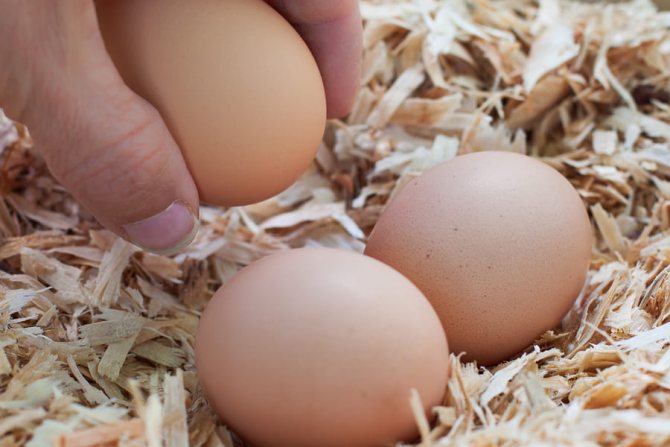

Conditions of detention: chicken coop for broilers
For fattening meat poultry, a system of perches and nests is not required, as in a poultry house for layers, in addition, chickens simply do not have time to enter reproductive age.Therefore, for broilers, moderately spacious rooms with feeders and drinkers, floor-standing or in mesh cages are quite suitable.
If you plan to breed broilers at home, regardless of the choice of direction (obtaining chickens of meat breeds or fattening young meat crosses), brooders for chickens will be required. You can equip a "chicken house" from scrap materials, the main thing is to observe the temperature regime and an acceptable level of humidity. The first two weeks of life, the air temperature in the room should be about 30 degrees, then it can be reduced to 25 degrees, after a month - to 20-23 ° C. It is advisable to avoid drafts - they can cause the death of livestock.
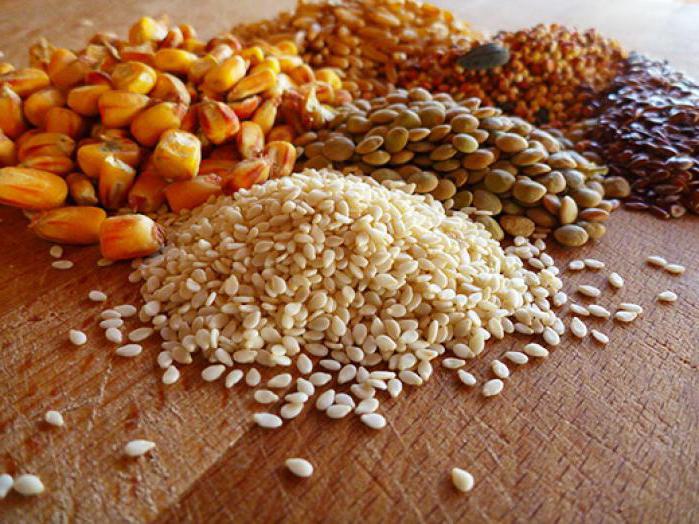

Ways to reduce the cost of feed in a private backyard
The least hassle is with compound feed that is appropriate for the age of the bird, however, broiler breeding at home can be built partly on cheap feed. However, during the first week of life, it is better to use a special compound feed. First, at this age, chickens eat very little, so the costs will be low. Second, proper feeding in the first week of life lays the foundations for health.
In a private backyard, meat-breeding chickens grow well on grain mixtures, where you can add greens, vegetables, and kitchen waste. But it is better to limit free range: the less opportunities broilers have to run, the better they gain weight.
Broilers: what kind of birds
Broiler chickens tend to have a larger body size than other poultry. The general characteristics of chickens are as follows:
- weight of an adult (2.5-3 months) chicken - 4.5 kg, rooster - 5-5.5 kg;
- the leg and wing are relatively short;
- character - phlegmatic;
- the body has a regular, horizontal body;
- the muscular component is well developed.
Important! Virtually all broiler breeds have a well-developed broiler instinct.
As a rule, this type of bird is kept solely for the sake of meat. They begin to rush relatively late - at 6-8 months, sometimes a year. Egg production is insignificant - 1-3 pieces per week (or 100-140 pieces per year).
The plumage of birds is mostly white, but both ash broilers and black ones can be found.
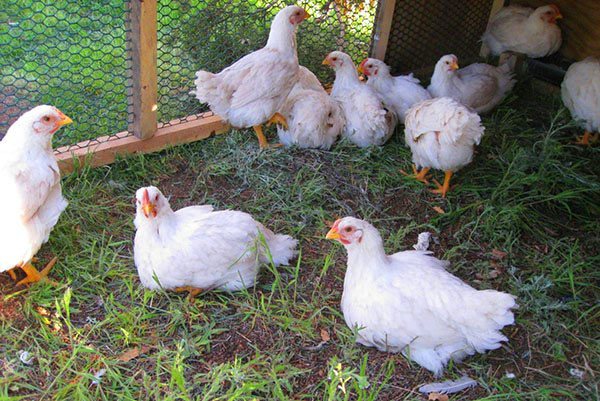

Broilers
Birds have two main genetic characteristics:
- Their egg may differ by the presence of two yolks.
- The offspring, unfortunately, do not take the strong traits of their parents, therefore they often grow weaker than them.
Broiler farming as a small business
As a small business, it may be interesting to breed meat chickens, but not crosses, since it takes a lot of effort to breed a cross, this is not a simple breeding work, but almost jewelry actions with genetic characteristics. In purebred breeding, it is convenient to use a hatching egg, then it will be possible to achieve the maximum number of chickens, even in the absence of good hens.
The young trade can be even more profitable than raising for meat. You can sell day old chicks, but grown chickens are sold at a higher price, the price can vary significantly depending on the breed (for example, from a day to a month, it can cost 45-60-100 rubles per head).
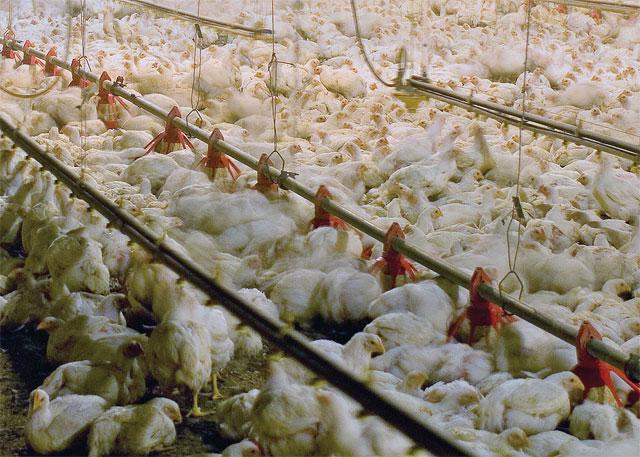

The best breeds of broiler chickens
When creating a new species, breeders try to improve one or another quality of the bird so that it is profitable to breed it. So modern breeds and crosses of broiler chickens have their own characteristic features.
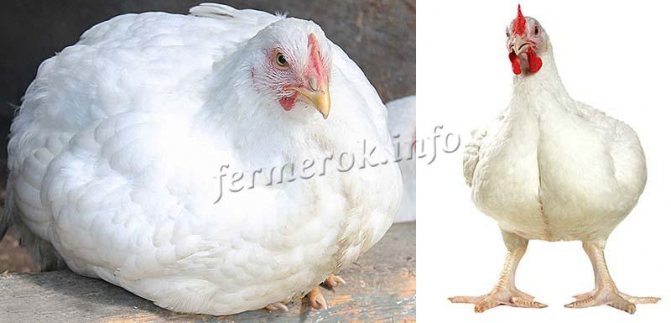

Photo of chickens Cross Smena and ROSS 708
- Cross "Change" was bred by crossing Broiler-6 and Gibro-6. Chickens grow quickly, adding up to 50 g every day. Vitality is about 97%. The meat of such a chicken is very tasty. Egg production within 140 eggs / year. The main feature is that the young need a broiler temperature 2 degrees higher than other breeds.It is important to consider this so that the survival rate of the chicks is high.
- Cross "ROSS 708" prized most of all for having the greatest body mass and the fastest gain in mass. For this reason, it is also the most profitable. Young animals reach a mass of 2.9 kg in just 35 days! This bird has large legs, developed pectoral muscles, low cost of meat.
Important!
Cross "ROSS 708" is easy to confuse with many other species, so it is better to buy young animals at proven poultry farms.
- Cross "ROSS 308" has a high performance. The bird's weight is not as big as that of the ROSS 708, but they give more eggs. Young animals gain up to 60 g of weight per day. The weight of an adult bird is 2.5 kg. Slaughter is carried out from 6 to 9 weeks in order to preserve the taste of the individuals. The carcass has a presentation, pale skin.
- Chickens "Cobb 500" have a yellowish skin tone. For 40 days, young growth reaches 2.5-2.8 kg. In addition, the survival rate is 98%, the feed costs are not very high, the legs are strong, and the breast is well-nourished.


Cobb 700 and Broiler 61
- "Cobb 700" highly productive bird. By 1.5 months, females weigh about 2.5 kg, and males 3 kg. Around this time, they are allowed to be slaughtered. The broiler reaches its final body weight at 2.5 months - chickens - 4 kg, roosters - 5 kg. The meat is light, juicy, tasty, the skin is yellow. Egg production is low, but the eggs are tasty.
- Broiler-61 has a high productivity, despite the fact that a minimum of funds is spent on feed - up to 2-2.2 kg of feed is spent per kilogram of growth. At 1.5 months, the weight of chickens is approximately 1.8 kg. Egg production is average, per year, the laying hen gives about 160 eggs. The survival rate of chicks is about 98%. Young animals grow quickly, but it is important to monitor their health so that the birds develop correctly. Vitamin supplements are required, from 5 weeks it is worth starting to limit food.
- Cross "Hubbard Isa F-15" fast growing. With special feeding, the weight of a bird can reach 8 kg, but more often 5-6 kg. The survival rate of young animals is 98-99%. At 2 months, females weigh about 2.7 kg and males 3.2 kg. Egg production up to 200 eggs / year. Eggs and meat taste good.
Interesting!
The Hubbard Isa F-15 lacks the dwarf gene. This is the main reason for the large body mass of pizza.
- Breed "Hybro-6" has a high vitality - 98%. They have good plumage, as well as the appearance of the bird as a whole. The character is flexible. At 6 weeks, the bird weighs about 1.5-1.6 kg. After slaughter, the carcass can be seen to have yellow skin and subcutaneous fat. During the day, the weight gain is about 30 g. Egg production of a laying hen is 160 eggs in 400 days. The meat is delicious, as are the eggs. When raising chickens, it is important to control feed rates, otherwise obesity will appear.
Organization of a poultry farm
If there is an opportunity to open a real poultry farm, then this requires a solid investment and a special approach. However, with a good business plan, such an enterprise can bring stable profits, especially if it is possible to acquire its own feed base.
The direction of work depends on which product the poultry farm will work on. A broiler as a final product means a rapid turnover of poultry generations, the use of productive meat crosses, and a full production cycle is also desirable - from feed to the supply of chicken meat to customers.
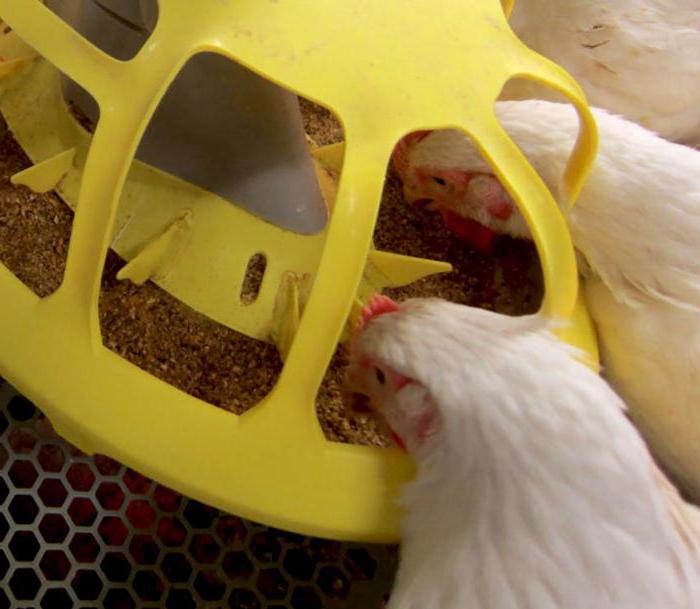

What and how to feed broilers
Special compound feed for broilers is the best type of ration for poultry raised for meat. At the same time, feeding rates can be prescribed by grams, however, experienced owners recommend feeding ad libitum. The larger the daily ration, the greater the weight of the broiler at the time of slaughter. But with the independent compilation of a full-fledged diet, it will be necessary to comply with the norms of nutrients necessary for the rapid fattening of poultry.
To build muscle quickly, you need protein-rich foods. If crushed grain is taken as a basis, then it must be enriched with meat and bone and fish meal, this increases the protein content in the mixture.The addition of greens and vegetables provides the broiler with vitamins and fiber, which aids digestion. It is more difficult to provide poultry with microelements, therefore it is better to use premixes, they contain the necessary set of all substances that ensure a good metabolism and contribute to the most complete assimilation of feed.
Feeding
It is better to purchase food for the broiler breed from industrial production. Only then will you get the most out of your breed. There are three types of diets:
- prelaunch - age from one day to four;
- starting - from 5 to 30 days;
- finishing - from a month to two.
The first type of feed contains a huge concentration of nutrients. They are quickly digested by small stomachs without rejection. The composition must necessarily include dairy products. After all, chicks grow quickly and they need calcium for their bones. They also have a positive effect on the digestive system of young animals.
The next diet includes the same components as the first. However, it is enriched with biologically active substances. Must be:
- yeast;
- chopped grass;
- meat and fish meal;
- fat;
- mineral supplements.
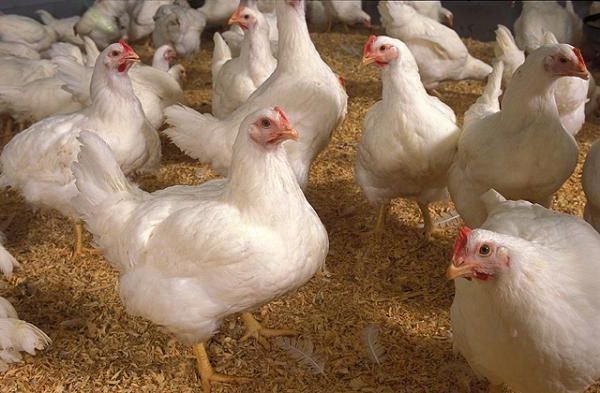

Feeding broilers is best done with commercial feed
Many farms slaughter chickens at the age of 30 days. The bird reaches 2-2.5 kg. To obtain larger individuals, use the finish menu. The birds are fed for another twenty to thirty days. As a result, large carcasses are obtained, on average 4.5 kg. The last diet contains:
- corn;
- wheat;
- barley;
- soybean meal;
- feed yeast;
- meat and bone meal;
- chopped grass;
- fat;
- a piece of chalk.
On such a diet, chickens begin to gain weight rapidly.
To improve the palatability of the meat, in recent weeks, an unlimited supply of fresh grass has been fed.
When to feed? Recommended every two hours. This is about seven or eight times a day. Breaks between feedings should not exceed six hours.
Chicks grow very quickly. A lack of calcium will trigger many bone and joint problems. Therefore, purchase special broiler mineral supplements.
Errors in keeping poultry of meat breed
Many inexperienced owners make mistakes in keeping and feeding poultry, and at best this leads only to an unsatisfactory result - the meat carcass is of poor quality, with an unsatisfactory fat content. If the diet is the same for the whole bird, regardless of its direction, then the result will be very average - layers will run worse, and broiler carcasses will be very far from ideal.
Another common misconception is trying to feed a bird with boiled vegetables. It is difficult to keep such a mash fresh; in warm weather, fermentation processes can begin within half an hour after cooking.
It is also not recommended to keep broiler meat crosses longer than 80-90 days. The amount of feed that the bird consumes at this age is quite large, and the growth rate is constantly decreasing. In addition, molting is approaching, during which the chicken loses some weight. An overexposed broiler can suffer simply because of its heavy weight, it is difficult for him to move. It is better to establish the turnover of chicken generations in order to timely obtain meat products.
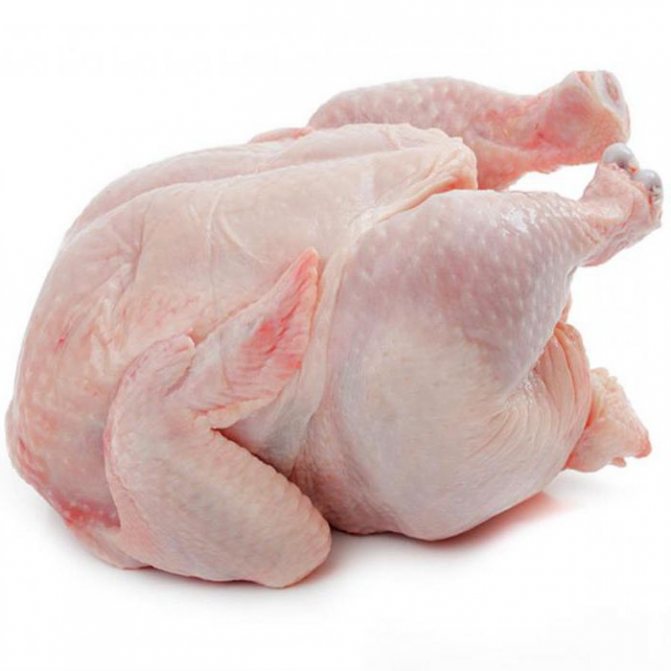

Useful Tips
The problem-free maintenance of broilers in a private farm is quite possible, especially if you feed the poultry with compound feed. It is important to remember that different types of compound feed are not interchangeable; for meat poultry, a composition with a high protein content is intended.
It is more convenient to purchase chickens in relatively small batches at intervals of a month, the groups will reach slaughter age one by one, which makes it easier to process products.
Seasonal keeping of broilers is most beneficial, this allows you to enrich the poultry ration with fresh grass, cheap vegetables and fruits.Thanks to seasonal keeping, you can slightly reduce the cost of poultry feeding and insulation of the poultry house.
If the broiler has reached such a size that it is quite possible to send it to the pan, it is more profitable to slaughter it than to spend money on treatment. You just need to make sure that this is not a dangerous ailment for a person.
Broiler diseases
Broiler breeds, despite their endurance and good immunity, are susceptible to some diseases, especially at an early stage of their development. The periods from 1 to 5 days and from 25 to 35 days are considered especially dangerous. Broilers can be prone to the following diseases:
- colds;
- digestive disorders;
- vitamin deficiency and hypovitaminosis.
Since pets do not come into contact with foreign birds and do not walk in open areas, the risk of contracting infectious diseases is extremely small. Colds, intestinal diseases and a lack or excess of vitamins are associated only with improper feeding and non-compliance with conditions of detention. If broilers are fed with wet feed, then the leftovers should be thrown away without leaving them the next day.
You can read more about broiler diseases in this article.

